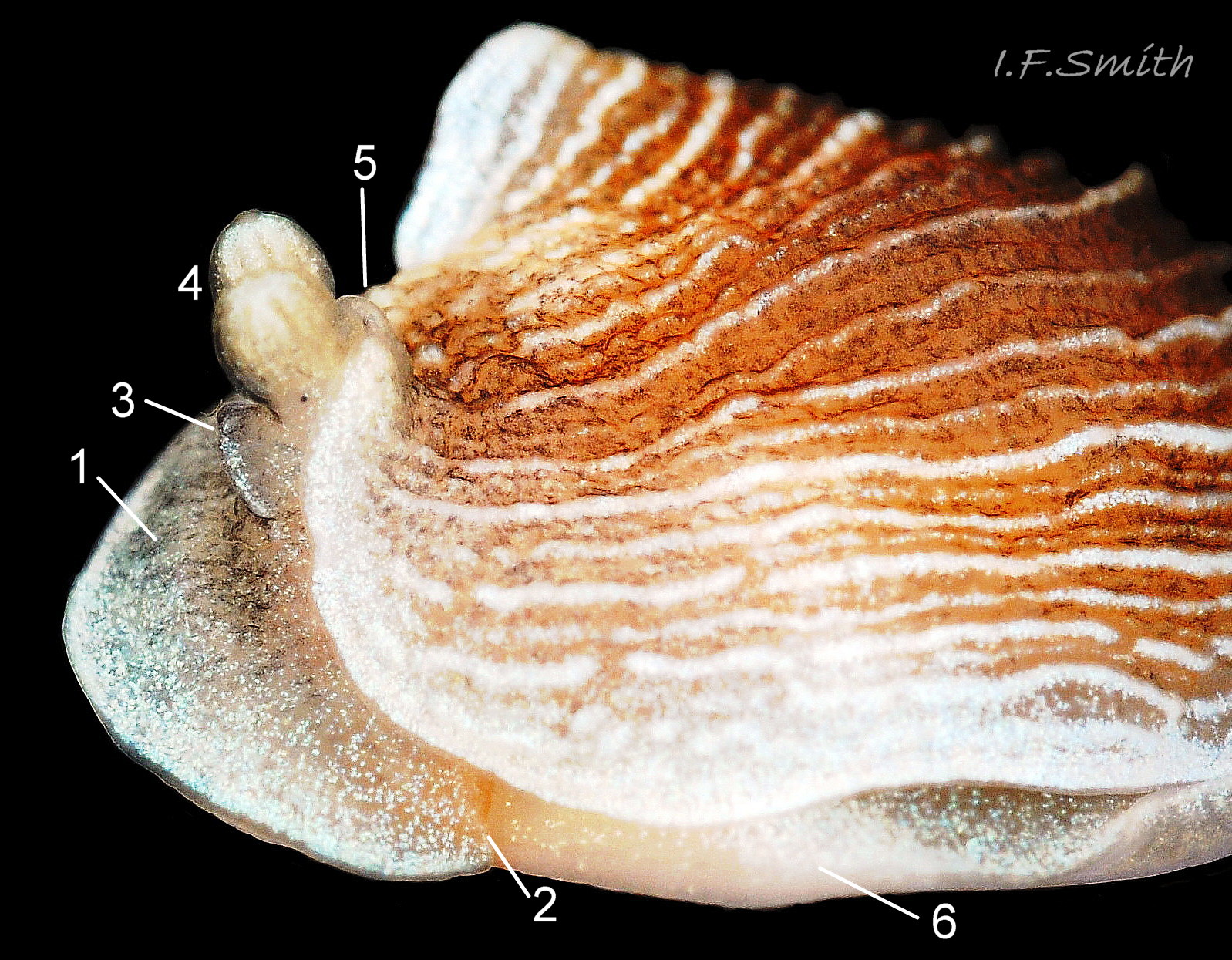1: Dorsally positioned half of proximal face of folded cephalic shield.
2: Fold of cephalic shield.
3: Caruncle which holds a gap open between the cephalic shield and the mantle edge for an inhalent respiratory current. Thompson & Brown (1984) assumed that it has a sensory function.
4: Chemoreceptor, ovoid rhinophores with vertical lamellae.
5: Raised mantle rim. When A. loveni is buried in sediment, the inhalent respiratory current enters the mantle cavity through the gap between the mantle rim and the cephalic shield.
6: Foot.
Thompson & Brown, in 1976, wrote that the ‘head’ is ‘produced laterally into pointed tentacles’ and in 1984 changed it to ‘blunt tentacles’ . Both publications had drawings, but they and the descriptions were of old, distorted, preserved specimens. The lateral ends of the ovoid cephalic shield on live specimens do not resemble tentacles in any of the many positions they can assume. See also image 11 Armina loveni.
Length 19.4 mm. Sublittoral, Orkney, Scotland. May 2017. Leg. S. Taylor.

